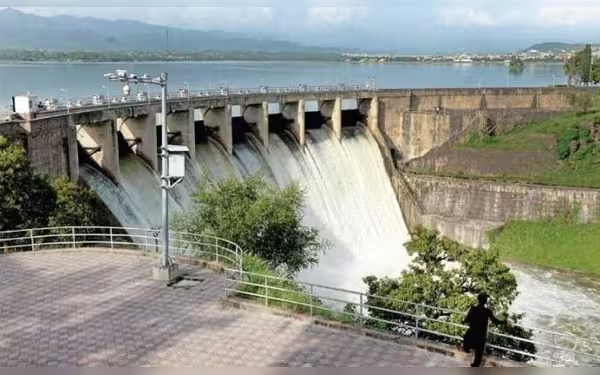Saturday, November 16, 2024 09:37 PM
IRSA Water Release of 107,100 Cusecs for Agricultural Support
- IRSA releases 107,100 cusecs water from rim stations.
- Indus River at Tarbela Dam shows healthy water levels.
- Kabul and Chenab Rivers contribute to overall water supply.
 Image Credits: urdupoint
Image Credits: urdupointIRSA announces a release of 107,100 cusecs water, ensuring agricultural needs and supporting ecosystem amid water scarcity challenges.
The Indus River System Authority (IRSA) has recently announced the release of a significant volume of water, totaling 107,100 cusecs, from various rim stations. This decision comes in response to the current water inflow, which has been recorded at 57,900 cusecs. Understanding the dynamics of water management in Pakistan is crucial, especially given the country's reliance on river systems for agriculture, drinking water, and energy production.
As per the latest data, the water level in the Indus River at Tarbela Dam stands at 1515.44 feet, which is notably 117.44 feet above its dead level of 1,398 feet. This indicates a healthy reservoir that can support various needs. The inflow and outflow of water at the dam have been recorded at 32,800 cusecs and 55,000 cusecs, respectively. Such figures are essential for managing water resources effectively, especially during critical agricultural periods.
In addition to the Indus River, the water level in the Jhelum River at Mangla Dam is also promising, currently at 1174.40 feet, which is 124.40 feet higher than its dead level of 1,050 feet. The inflow and outflow here are recorded at 5,000 cusecs and 32,000 cusecs, respectively. This data is vital for farmers and local communities who depend on these water sources for irrigation and daily use.
The release of water at various key points, including Kalabagh, Taunsa, Guddu, and Sukkur, has been recorded at 57,200, 49,000, 35,700, and 4,200 cusecs, respectively. Furthermore, the Kabul River has contributed to the overall water supply with a release of 10,700 cusecs at Nowshera, while the Chenab River has added 3,000 cusecs at Marala. These figures highlight the interconnectedness of Pakistan's river systems and the importance of coordinated water management.
The recent water release by IRSA is a positive development for Pakistan's water management strategy. It not only ensures that agricultural needs are met but also supports the overall ecosystem. As the country continues to face challenges related to water scarcity and climate change, effective management of these vital resources will be crucial for sustainable development. Understanding these dynamics can empower communities to make informed decisions about water usage and conservation, ultimately leading to a more resilient future.













